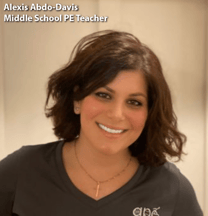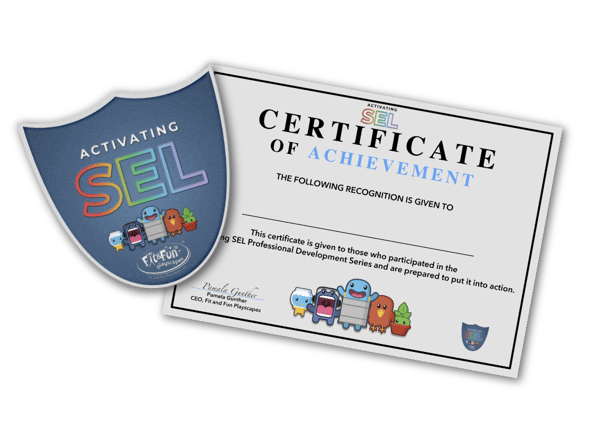Why Everyone Should Have The Buddy Circle™
The Buddy Circle™ (available in English or Spanish) was created as a wonderful tool to address student to student conflict. Use the Buddy Circle™ much like you would use a "talking bench"; to help children work out differences. The words are great reminders of what students should do to engage in appropriate social emotional skills! The BUDDY CIRCLE™ can be used to teach students how to address conflicts with other students FACE TO FACE while the words remind them what they should be working towards!The Buddy Circle™ strategy addresses common conflicts that arise during a child’s day when engaged in recess on the playground or in Physical Education (PE). Although movement opportunities encourage social engagement and interpersonal communication, they can also be wrought with situations where misunderstandings and or minor conflicts occur. Examples include physical contact (e.g. running into each other), being hit by an object or ball accidentally, not passing the ball to a player, or name calling. In the end, there is usually an aggressor and a victim. It is important to recognize the statements/words and feelings of both parties. When a child comes to the aid of the PE teacher or supervisor to tell what happened to them, it is important to assess the level of the conflict. If it is deemed that the conflict was a misunderstanding or non-malicious accident, the teacher can ask the students to discuss the situation using the Buddy Circle. In this way, the teacher can encourage children to address conflicts independently. When introducing the Buddy Circle to children it is important to share what is expected and how to communicate with each other respectfully.
Everyone Can Use the Buddy Circle
Available in English or Spanish
The Buddy Circle™ Terminology
It is important that the PE teacher or recess supervisor speak to the children about what each of these important terms mean. Below are brief definitions that provide a baseline for PE teachers and children. Post these on a bulletin board to emphasize what your expectations are during physical activity.
- Empathy: The ability to imagine what someone else might be thinking or feeling.
- Sharing: Sharing is the joint use of a resource or space.
- Cooperation: An act or instance of working or acting together for a common purpose or benefit.
- Caring: Feeling or showing concern for or kindness to others. She is a kind, caring person.
- Friendship: A friendship is a relationship or state of being friends between two people who like each other.
- Listening: Listening is the active process of receiving and responding to spoken (and sometimes unspoken) messages.
- Respect: Respect is a positive feeling or action shown towards someone considered important or held in high regard. It is the process of honoring someone by exhibiting care, concern, or consideration for their needs or feelings of others.
Children should be able to learn and know what these words mean and how they can use and follow them to meet the expectations outlined by the teacher.
How to use The Buddy Circle™
When conflicts occur between two children, the PE teacher or recess supervisor sends them to the Buddy Circle™ designated for settling disputes. They resolve the problem and report back to the PE teacher or recess supervisor that the problem has been resolved. They report the outcome to the teacher before returning to the activity. They may or may not be required to report details. In short, that would be up to the teacher. As in any conflict resolution, the rules must be simple: Show respect, listen/hear from both sides, and work to resolve the misunderstanding.

Alexis Abdo-Davis is a middle school PE teacher. She requires her students to “share the story and outcome of what happened” prior to returning to the activity. In this way, she holds the students accountable for addressing the conflict as well as knowing the Buddy Circle™ procedures. It is important to note that she does not act as the referee, because it removes responsibility from the students for solving their problem and knowing how to use the Buddy Circle™. She recently reported the conversation of two fifth-grade boys who had just returned from the Buddy Circle™. One said, “Let's tell her it's over,” and the other agreed. When they approached Mrs. Abdo-Davis they told her what happened and that it was over. She said “Okay, great and asked what word best describes how they feel. Both boys replied with “friendship” and the conflict was over. She also reports that since using the Buddy Circle™, students often seek out those whom they have engaged with in the Buddy Circle™ process as partners and team mates.
Click here to download a printable Activity Guide for The Buddy Circle™.
Want More Ideas for Social-Emotional Learning Activities?
Sign up for our "Activating SEL" series and get certified! You could learn a lot about how the Buddy Circle™ is incorporated into social emotional learning. Click here to get started!
Download our free Mega Guide to discover hundreds of active learning techniques and strategies for improving kids’ SEL skills. You’ll also get 10% OFF our Super Stickers®️, Sensory Pathways, Stencils, and Roll-Out Activities®️




Leave a comment